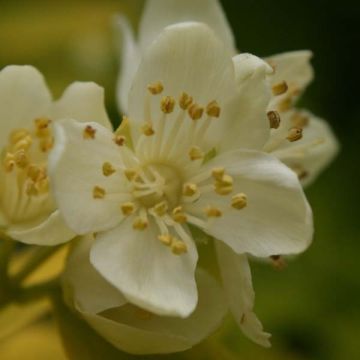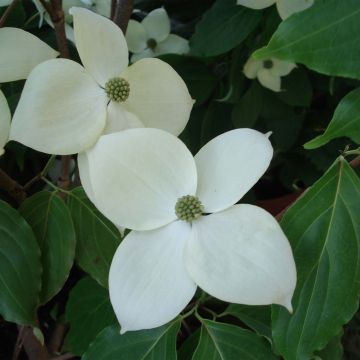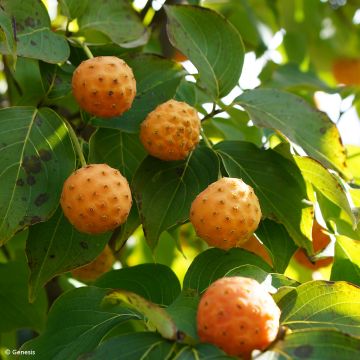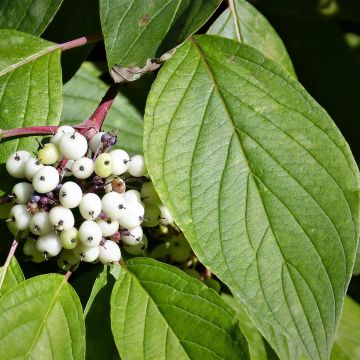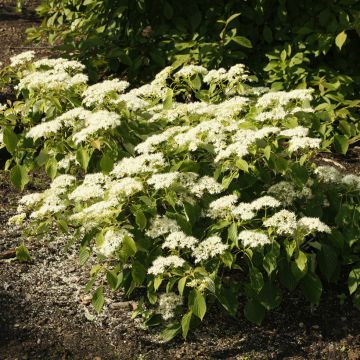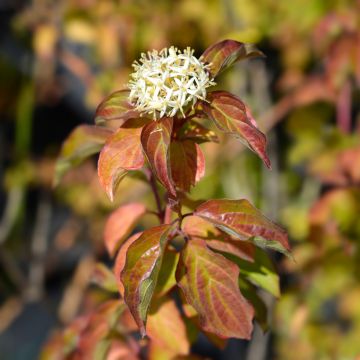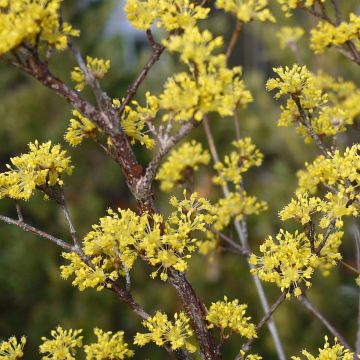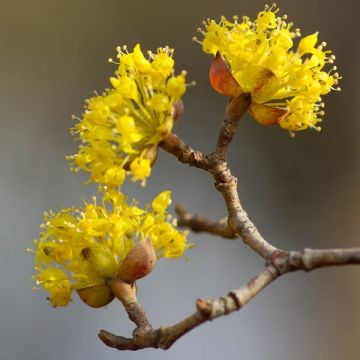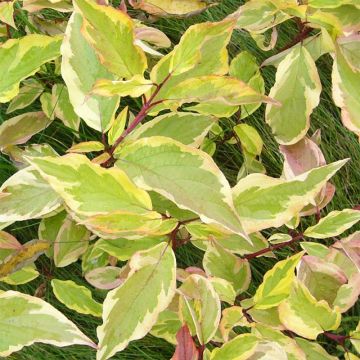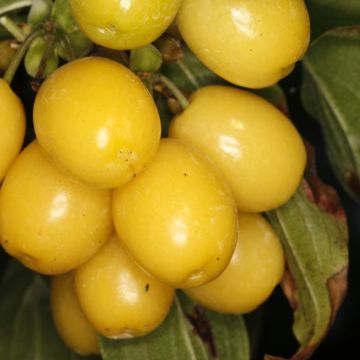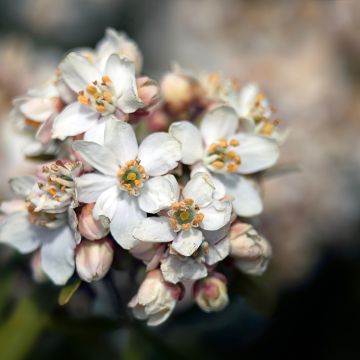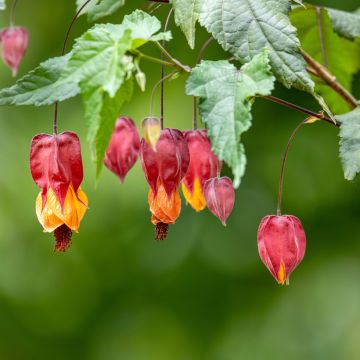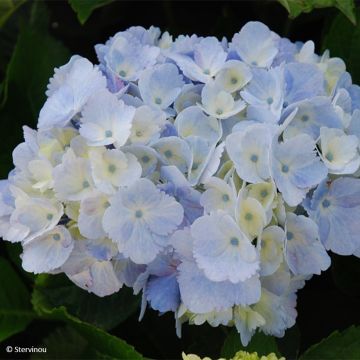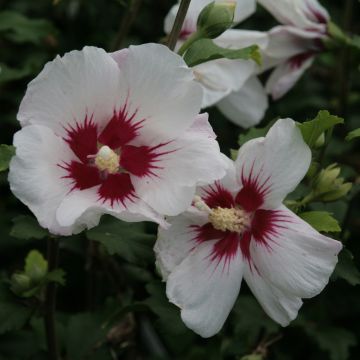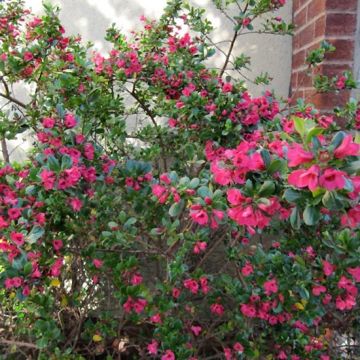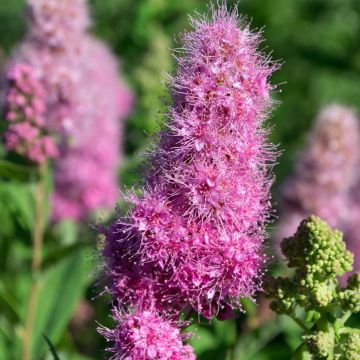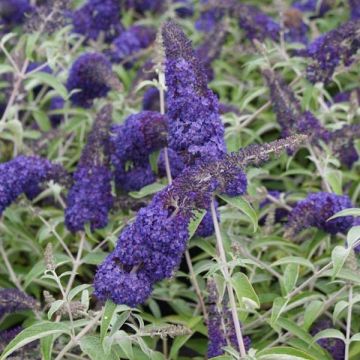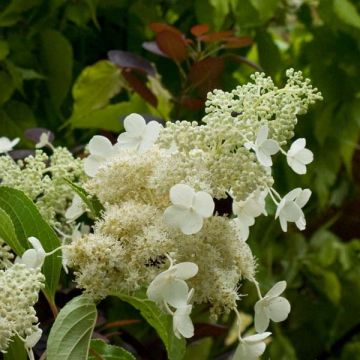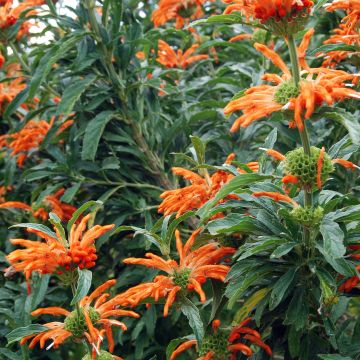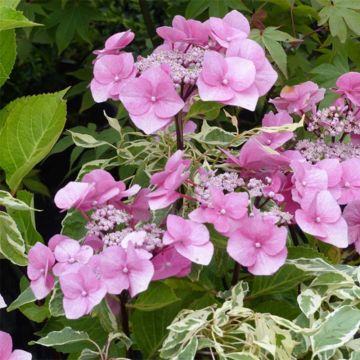

Cornus controversa Laska
Cornus controversa Laska
Cornus controversa Laska
This item cannot be shipped to the selected country
Delivery charge from €5.90
More information
Schedule delivery date,
and select date in basket
This plant carries a 24 months recovery warranty
More information
We guarantee the quality of our plants for a full growing cycle, and will replace at our expense any plant that fails to recover under normal climatic and planting conditions.
From €5.90 for pickup delivery and €6.90 for home delivery
Express home delivery from €8.90.
Does this plant fit my garden?
Set up your Plantfit profile →
Description
The Cornus controversa Laska is a variety of Pagoda Dogwood that stands out for its narrow habit, which is well-suited for small gardens. It is also easily recognizable by its much longer leaves compared to its counterparts, giving it a unique appearance. The white flowering in May-June is classic, and later develops into small decorative blue-black fruits. In autumn, its foliage turns reddish before falling to the ground. Compact and uncommon, this beautiful shrub deserves a place in the garden, in full sun or partial shade, in a moist, non-calcareous soil.
The Dogwood belongs to the small family of Cornaceae, which, after several revisions of the botanical classification, now only includes the genera Cornus and Alangium. There are several dozen species of Dogwoods, most of which are shrubs, but some, like Cornus nuttallii and C. kousa, form small trees. This is also the case with C. controversa, native to China, Korea, and Japan, where it can reach a height of up to 12m. It has a straight trunk and horizontal layers of vegetation, reminiscent of the distinctive architecture of pagodas in the Far East, from which it gets its common name. Along with C. alternifolia, it is the only species with alternate leaves, rather than opposite leaves.
The Cornus controversa Laska is a variety with much slower growth than the typical botanical species. After 10 years of planting, with an annual growth of 15 to 30cm, it will only reach a height of 3m with a spread of about 1.50 to 2m, whereas most others tend to spread, which actually enhances their tiered (pagoda-like) foliage better than him. However, Laska compensates with its unique foliage, much narrower and very aesthetic. Measuring up to 13cm long, the leaves are medium to dark green, paler on the underside, with clearly visible veins, and are carried by flexible 4cm petioles. Elongated, almost lanceolate, they tend to droop downwards, giving the shrub an unusual silhouette among this group of Dogwoods.
From May to June, inflorescences measuring 10 to 12cm in diameter form, called cymes, with an almost flat top, cream-white in colour, composed of numerous slightly fragrant flowers. They then develop into small spherical fruits that turn blue-black from August onwards, adding new ornamental interest to the plant. Finally, the autumn climax arrives, when the foliage turns shades of red that capture everyone's attention.
This compact Pagoda Dogwood will find its place even in the most intimate gardens. Its design will be appreciated in contemporary spaces, and it can also be integrated into a Japanese scene. Plant other flowering shrubs alongside it, such as Azaleas, which will reward you with their vibrant trumpet-shaped flowers in yellow, pink, red, orange, purple, and even bicolour, depending on the varieties you choose. Also, consider the Mountain Laurels, like Kalmia latifolia Latchmin, with its astonishing precious and original purple flowers. These underrated acid-loving shrubs are among the most beautiful spring blooms. Complete your scene with the delightful Acer japonicum Vitifolium, a Japanese Maple that is easier to grow than its counterparts and will delight you with its tender green palmate leaves in spring, turning into fabulous shades of bright orange and crimson red in autumn.
Report an error about the product description
Plant habit
Flowering
Foliage
Botanical data
Cornus
controversa
Laska
Cornaceae
Cultivar or hybrid
Other Cornus
Planting and care
Easy to grow, this Cornus controversa Laska requires little maintenance, especially pruning, as it naturally takes on its unique habit. It prefers a fresh, humus-bearing soil that is not too chalky and slightly acidic, and above all, not drying out. Plant it in a sunny or semi-shaded position. Dig a hole 50 cm on each side and in depth, and if your soil is slightly chalky, mix acidic planting compost (based on peat) with the existing soil, as well as compost or leaf mould. The same advice applies to sandy soil, where it is essential to increase water retention. Choose a shaded exposure, for example on the edge of trees, to maintain good atmospheric humidity, and dig a larger planting hole to incorporate compost. If the soil is already neutral or acidic, a slight addition of compost and manure will be sufficient for planting. As part of maintenance, regularly apply fertiliser, as this Dogwood is a bit hungry, and also use pine bark as mulch to maintain acidity in alkaline soils. Very hardy, it is resistant to -20°C and is generally free from diseases or insect attacks.
Planting period
Intended location
Care
This item has not been reviewed yet - be the first to leave a review about it.
Summer-flowering shrubs
Haven't found what you were looking for?
Hardiness is the lowest winter temperature a plant can endure without suffering serious damage or even dying. However, hardiness is affected by location (a sheltered area, such as a patio), protection (winter cover) and soil type (hardiness is improved by well-drained soil).

Photo Sharing Terms & Conditions
In order to encourage gardeners to interact and share their experiences, Promesse de fleurs offers various media enabling content to be uploaded onto its Site - in particular via the ‘Photo sharing’ module.
The User agrees to refrain from:
- Posting any content that is illegal, prejudicial, insulting, racist, inciteful to hatred, revisionist, contrary to public decency, that infringes on privacy or on the privacy rights of third parties, in particular the publicity rights of persons and goods, intellectual property rights, or the right to privacy.
- Submitting content on behalf of a third party;
- Impersonate the identity of a third party and/or publish any personal information about a third party;
In general, the User undertakes to refrain from any unethical behaviour.
All Content (in particular text, comments, files, images, photos, videos, creative works, etc.), which may be subject to property or intellectual property rights, image or other private rights, shall remain the property of the User, subject to the limited rights granted by the terms of the licence granted by Promesse de fleurs as stated below. Users are at liberty to publish or not to publish such Content on the Site, notably via the ‘Photo Sharing’ facility, and accept that this Content shall be made public and freely accessible, notably on the Internet.
Users further acknowledge, undertake to have ,and guarantee that they hold all necessary rights and permissions to publish such material on the Site, in particular with regard to the legislation in force pertaining to any privacy, property, intellectual property, image, or contractual rights, or rights of any other nature. By publishing such Content on the Site, Users acknowledge accepting full liability as publishers of the Content within the meaning of the law, and grant Promesse de fleurs, free of charge, an inclusive, worldwide licence for the said Content for the entire duration of its publication, including all reproduction, representation, up/downloading, displaying, performing, transmission, and storage rights.
Users also grant permission for their name to be linked to the Content and accept that this link may not always be made available.
By engaging in posting material, Users consent to their Content becoming automatically accessible on the Internet, in particular on other sites and/or blogs and/or web pages of the Promesse de fleurs site, including in particular social pages and the Promesse de fleurs catalogue.
Users may secure the removal of entrusted content free of charge by issuing a simple request via our contact form.
The flowering period indicated on our website applies to countries and regions located in USDA zone 8 (France, the United Kingdom, Ireland, the Netherlands, etc.)
It will vary according to where you live:
- In zones 9 to 10 (Italy, Spain, Greece, etc.), flowering will occur about 2 to 4 weeks earlier.
- In zones 6 to 7 (Germany, Poland, Slovenia, and lower mountainous regions), flowering will be delayed by 2 to 3 weeks.
- In zone 5 (Central Europe, Scandinavia), blooming will be delayed by 3 to 5 weeks.
In temperate climates, pruning of spring-flowering shrubs (forsythia, spireas, etc.) should be done just after flowering.
Pruning of summer-flowering shrubs (Indian Lilac, Perovskia, etc.) can be done in winter or spring.
In cold regions as well as with frost-sensitive plants, avoid pruning too early when severe frosts may still occur.
The planting period indicated on our website applies to countries and regions located in USDA zone 8 (France, United Kingdom, Ireland, Netherlands).
It will vary according to where you live:
- In Mediterranean zones (Marseille, Madrid, Milan, etc.), autumn and winter are the best planting periods.
- In continental zones (Strasbourg, Munich, Vienna, etc.), delay planting by 2 to 3 weeks in spring and bring it forward by 2 to 4 weeks in autumn.
- In mountainous regions (the Alps, Pyrenees, Carpathians, etc.), it is best to plant in late spring (May-June) or late summer (August-September).
The harvesting period indicated on our website applies to countries and regions in USDA zone 8 (France, England, Ireland, the Netherlands).
In colder areas (Scandinavia, Poland, Austria...) fruit and vegetable harvests are likely to be delayed by 3-4 weeks.
In warmer areas (Italy, Spain, Greece, etc.), harvesting will probably take place earlier, depending on weather conditions.
The sowing periods indicated on our website apply to countries and regions within USDA Zone 8 (France, UK, Ireland, Netherlands).
In colder areas (Scandinavia, Poland, Austria...), delay any outdoor sowing by 3-4 weeks, or sow under glass.
In warmer climes (Italy, Spain, Greece, etc.), bring outdoor sowing forward by a few weeks.

































